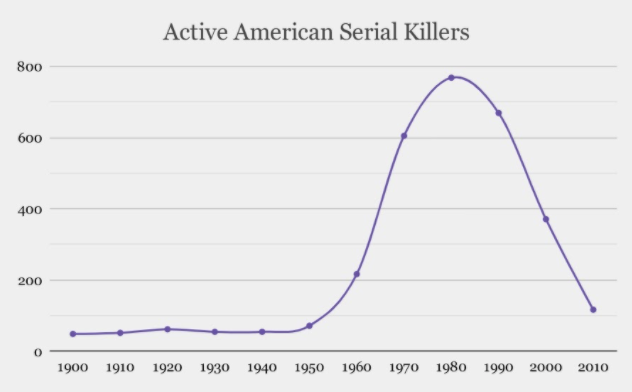

Native women are at particularly high risk of commercial sexual exploitation, according to a 2009 study by the Minnesota Indian Women’s Sexual Assault Coalition, which blamed historic trauma, poverty, alcohol or substance abuse, domestic violence and homelessness.

“Truck stops are known hotbeds of the sex trade, and truckers with nefarious motives can exploit that.” "It also provides a veneer of legitimacy to serial killers being on the highway or at truck stops in the middle of the night,” he said. Tower sign advertising a truck stop in Van Horn, Texas, 26 June 2008.
#Radford university serial killer data drivers
Trucking, he explained, is an ideal profession for serial killers, as it gives drivers both mobility and anonymity. Today, the FBI has collected profiles of as many as 400 truckers who may still be active serial killers, Arntfield said. The program initiative noted that suspects included predominantly long-haul truck drivers. This prompted the FBI to establish a Highway Serial Killings Initiative, which tracks known and unknown killers. In the early 2000s, the Oklahoma State Bureau of Investigation noted a pattern in a string of women’s bodies that had been dumped along Interstate 40 in four states. At least one of his victims, an unidentified woman dubbed "Eklutna Annie," is believed to have been an Alaska Native.

“Serial killers prey on marginalized populations, and indigenous women make up a disproportionate number in the victim pool,” Arntfield said.Ĭonvicted serial killer Robert "Willy" Pickton, a Vancouver, B.C., pig farmer, known to have murdered at least 13 indigenous women.

It is a region with enough wilderness that makes hiding a body easy. So does the Northwest, a region stretching from Oregon north along the Pacific coast that is home to hundreds of thousands of Native, First Nations, Metis and Inuit peoples whom law enforcement often overlooks. The data and maps are available to both law enforcement and the general public.Ĭanadian criminologist Michael Arntfield, who serves on MAP’s board of directors, said Washington, D.C., for example, has one such cluster. Hargrove developed an algorithm to detect and map homicide clusters - geographic locations where multiple victims have been killed separately but in similar ways - that suggest the presence of serial killers. It includes not only FBI data but also information from police agencies that do not use ViCAP. Hargrove to create the Murder Accountability Project (MAP), a database that tracks unsolved killings across the United States. This led investigative journalist Thomas K. Thirty years ago, the FBI launched the Violent Criminal Apprehension Program (ViCAP), a database of unsolved violent crimes, allowing police agencies around the country to report violent crimes, analyze existing data and find patterns that could lead them to the perpetrators.īut as The Atlantic reported in 2015, out of about 18,000 law enforcement agencies across the country, only about 1,400 participate in the system. It’s a question many American Indians and Alaska Natives (AI/ANs) have asked, given the epidemic of missing and slain indigenous people across North America. Sapp attended the arraignment of Brian Steven Smith, who is accused of killing Abouchuk. 21, 2019, in Anchorage, Alaska, shows a photo of her sister, Veronica Abouchuk. Rena Sapp, outside a courtroom Monday, Oct.


 0 kommentar(er)
0 kommentar(er)
